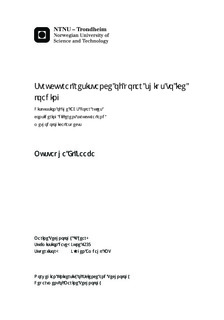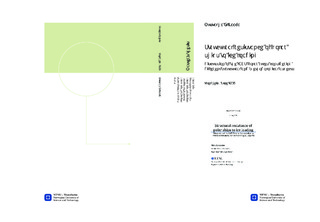| dc.description.abstract | Generally, the design of ships and offshore structures intended for operation in ice infested waters has been based upon elastic methods of plasticity. However, through development of knowledge regarding the true behaviour of structural components in the large deflection and post-ultimate resistance range, the achievement of more consistent utilization of strength members has become possible. Overloading in the case of ice loading is quite typical and hard to overlook. To minimize the consequences of these overload conditions; a better understanding of structure behaviour within the plastic range has become necessary. Notwithstanding the plastic design method can be somewhat more complex than the elastic approach; the method may result in significant reduction in steel weight. In this purpose, the International Association of ship Classification Societies, (IACS), has initiated new unified rules for Polar ships, in collaboration with the Russian Register and partly by experience from DNV and other classification societies. These rules are based on plastic methods to determine the scantlings of plating, stiffeners and girders, such that the structure can resist the maximum pressures and forces as the ship is crushing the iceIn the IACS unified rules, a steel Polar Ship intended for navigation in ice-infested polar waters is assigned a class notation PCi, as described in table 1 in the IACS polar class requirement I1. The selection of a class notation is a result of keeping the balance between statistical analysis, owners experience, ice expertise and financial/economic considerations.Table 1: Polar class descriptionPC1 Year-round operation in all Polar watersPC2 Year-round operation in moderate multi-year ice conditionsPC3 Year-round operation in second-year ice which may include multiyear ice inclusions.PC4 Year-round operation in thick first-year ice which may include old ice inclusionsPC5 Year-round operation in medium first-year ice which may include old ice inclusionsPC6 Summer/autumn operation in medium first-year ice which may include old ice inclusionsPC7 Summer/autumn operation in thin first-year ice which may include old ice inclusionsDue to the growing popularity of the IACS Polar Class (UR I1) rules within the maritime cluster these days, it is necessary for the concerned designers and approval engineers to better understand and master the background and the different aspects that have led to these rules, which has been the main motivation for the issuance of this project. | nb_NO |

